Phosphates: Vivianite
 Diagnostic card.
Diagnostic card.
Fe 3 (PO 4 ) 2 * 8 H 2 O
Singonia monoclinic
Hardness 1.5-2
Specific weight 2,6-2,7
Cleavage is very good
Beam breaking, brittle
Colorless, white
Color in powder white
Glitter glass, bold, pearly

Depending on the formation conditions, this mineral can form crystals longer than 1 m. This fairly common phosphate is represented by prismatic crystals with excellent cleavage. They are often rounded or pointed; The dimensions are huge (crystals reach 1 m). There are tabular individuals, sometimes combined in star aggregates. Powder-like raids, inclusions, rounded bonds in clays are also common.
Chemical composition-content (in%): FeO-43; P2O3- 28.3; H2O: 28.7; Varieties: partially oxidized with Fe2 + and Fe3 + -b-cupricite, with predominance of Fe3 + - a-kerchenite completely oxidized without Fe2 + - oxy-cerchenite; Enriched with Mn, Mg and Ca - paravivianite. Glitter - glass to pearl on cleavage planes. Prismatic view of symmetry. Cleavage is perfect by (010).
Long-columnar crystals, most often overgrown; Usually in radiant, fibrous aggregates, rosettes, spheres and kidneys, as well as tabular (Colorado, USA); Often friable and earthy (blue iron earth). Cleavage is perfect, gypsum-like; Density of 2.6-2.7; Fresh colorless, under the influence of atmospheric oxygen, the crystals are immediately colored in light blue, blue, dark blue or black; The ferrous iron contained in the crystal lattice is converted into a trivalent iron. The thin plates are flexible, the layers of the crystal lattice gliding like graphite and gypsum.
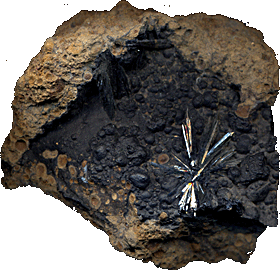 Diagnostic signs.
Diagnostic signs.
In its fresh form, Vivianite is colorless, but due to secondary changes it quickly acquires a blue, bluish-green and light blue color. Many crystals are mostly transparent or translucent. The color is unchanged - light shades and even colorless, with oxidation in the air - grayish-blue, grayish-green, dark blue to black-blue (Kerchenits - in the photo).
Origin.
Vivianite can form as a secondary mineral in the roof of many sulphide deposits, as well as in secondary changes in the primary phosphates of pegmatites. It is formed, in addition, in the clay sediments of fresh lakes as a result of the interaction of iron-enriched water with phosphorus-containing organic material. Vivianite is also found in deposits of lignite and sedimentary iron ores of freshwater basins.
Vivianite is formed in areas close to the surface, under the influence of oxygen in the air. Circulating phosphate-rich waters affect minerals that contain iron (mostly bivalent), such as pyrite, siderite, fayalite, pyrrhotite, and wash away some of the iron. When the water evaporates, the vivianite crystallizes. In pegmatites, iron phosphates can be converted to vivianite, absorbing water. In this way very beautiful crystals were formed, in particular in Cornwall (England); Very large (up to 15 cm) dark green samples in Bolivia, Colorado mines and many other places in the USA; Exceptional beauty crystals originate from Southern Serbia, Eastern Bavaria (Germany) and Peru. In the form of fine dust, the mineral is widely distributed in clay sedimentary rocks. Impressive crystals longer than 1 mm come from the clay quarries of Cameroon.
Deposits and applications.
The largest crystals in the world (maximum size about 130 cm), either single or combined in radiant druses, are mined in the Anlo lake lakes near Ngaunder in Cameroon. Beautiful transparent crystals were found at the deposits of Ljalagua in Bolivia, Bingham in Utah and Idaho. Vivianite is of great interest for collecting. It can also be used (if it forms large clusters) in the manufacture of paints. Initially, the mineral was called blue iron earth, but in 1817 A.G. Werner gave the mineral a name in honor of the English mineralogist D.G. Viviana. It is used as an inexpensive dye; Is of interest to collectors.
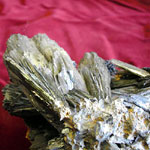
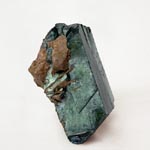

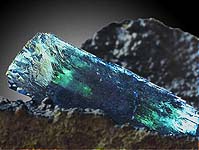
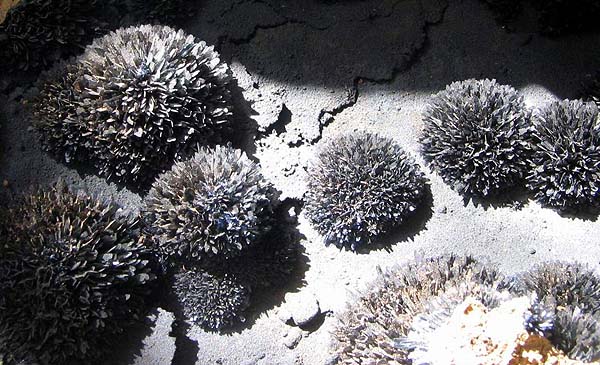
Vivianit. Kerch mine, Crimea, Ukraine. Photo: © А.А. Evseev.
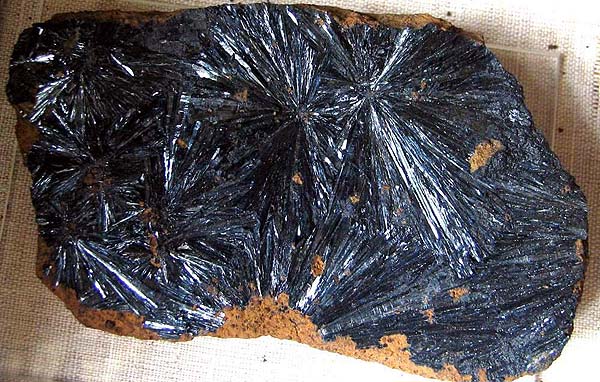
Vivianit. Kerch mine, Crimea, Ukraine. Photo: © А.А. Evseev.
- Ghetchellit - "New Almaden blend" - arsenide and antimony sulfide (modern sulfosol)
- Antimony is a toxic metal (semimetal) , widely used in metallurgy, medicine and engineering
- Zirconium - a rare and undiscovered metal and the most dangerous precious stone in oxide and salt
- Gold - yellow dangerous and poisonous metal of modern accurate digital and cable technologies
- Sulfur is a golden-yellow toxic substance and a sign of active volcanic activity
- Cadmium is an undisputed toxic silvery metal unknown to a wide range of people
- Lead - a poisonous gray imitator of metallic silver and toxic metal blende
- Arsenic is a classic poison of medieval and modern poisoners and medicine in medicine
Poisonous and radioactive dangerous stones and minerals
** - poisonous stones and minerals (mandatory check in the chemical laboratory + explicit indication of toxicity)
** - radioactive stones and minerals (mandatory check on the standard dosimeter + ban on open sales in case of radioactivity exceeding 24 milli / g / h + additional measures of population protection)
Catalog of minerals and semi-precious stones of the world by groups
** - poisonous stones and minerals
** - radioactive stones and minerals


Comments
When commenting on, remember that the content and tone of your message can hurt the feelings of real people, show respect and tolerance to your interlocutors even if you do not share their opinion, your behavior in the conditions of freedom of expression and anonymity provided by the Internet, changes Not only virtual, but also the real world. All comments are hidden from the index, spam is controlled.